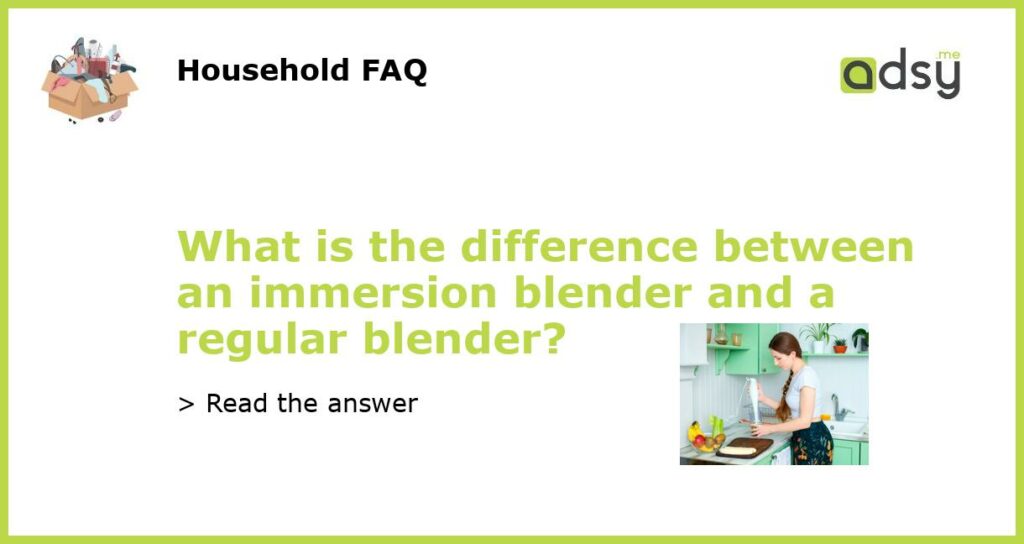Understanding the Main Differences between Immersion and Regular Blenders
Blenders are important kitchen appliances that help you prepare smoothies, shakes, purees, and many other foods. However, with so many blender types available on the market, it can be difficult to know which one is right for you. Two of the most common types are immersion blenders and regular blenders. While both types serve a similar purpose, they work in vastly different ways.
What is an Immersion Blender?
An immersion blender, also known as hand blender, wand blender, or stick blender, is a handheld blender that is designed for quick and easy usage. This blender’s long shaft is inserted into a container of food to blend or puree it, eliminating the need to transfer the food to a separate blender. This type of blender gets its name from its ability to “immerse” itself directly into the food for blending.
What is a Regular Blender?
A regular blender, also known as a countertop blender, is a standalone appliance that sits on the countertop and has a powerful motor that quickly blends or purees ingredients. This type of blender comes with a pitcher or container that is placed on top of the motor, with a lid that forms a tight seal to prevent the contents from splashing or spilling while blending.
The Main Differences between Immersion and Regular Blender
So, what makes these two types of blenders different? Here are some of the primary differences:
Design and Size:
The main distinguishing factor between the two types of blenders is design and size. Immersion blenders are small, handheld devices that are easy to maneuver while regular blenders are much larger and bulkier. As such, immersion blenders are best used for small jobs while regular models are designed for heavy-duty blending.
Functionality:
Another key difference is functionality. Immersion blenders are suitable for only a few tasks such as blending soups, sauces and smoothies. On the other hand, regular blenders are extremely versatile and can blend ice, fruits, vegetables, nuts, and other hard-to-blend foods.
Cleaning:
Cleaning the blenders also presents a significant difference. Unlike regular blenders, immersion blenders are much easier to clean because they are smaller and have fewer parts. Regular blenders have sharp blades at the bottom, making cleaning them more complicated, and sometimes they require more time and effort.
Price:
Although prices vary depending on the brand and model, in general, immersion blenders are less expensive than regular blenders. Regular blenders come with more power and capacity, which may drive up the price significantly.
Noise:
Lastly, the amount of noise emitted from both types of blenders is different. Regular blenders are generally much louder than immersion blenders because they have a more powerful motor and are designed to blend harder foods. Immersion blenders are quieter but can still make noise, depending on the model and how they’re used.






